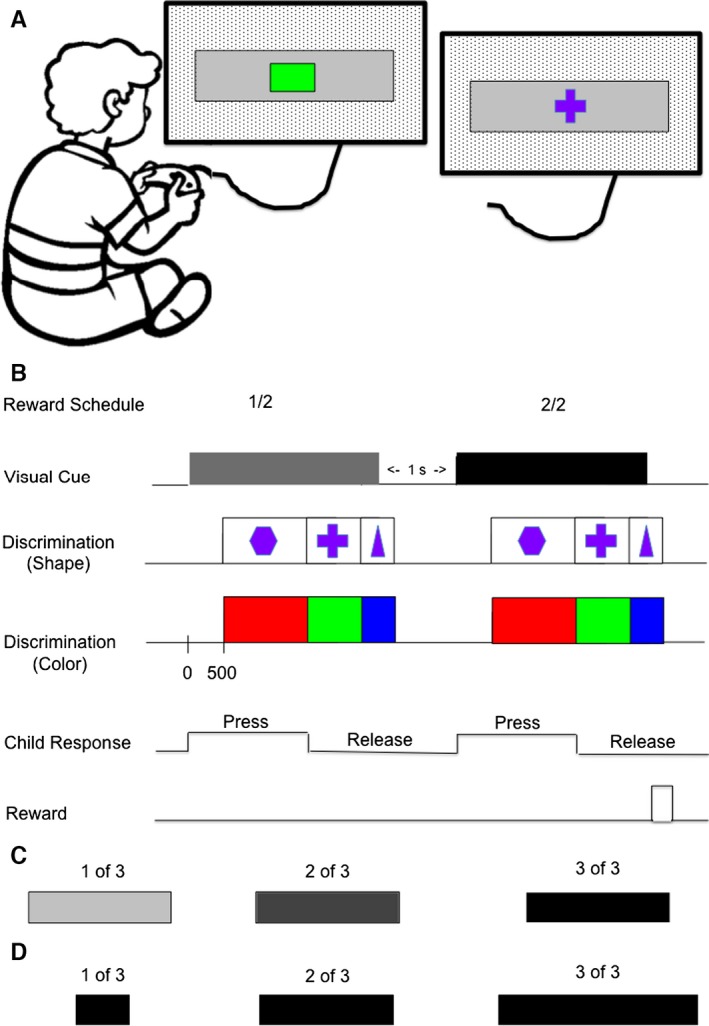Figure 1.

Visually cued reward schedule task. (A) Behavioral testing situation. The child sat facing a rear projection screen (90° °— 90°) located 57 cm away. A touch lever registered responses. A black and white random dot background covered the whole screen. A visual cue (shown here is a gray rectangle, but see C and D, below) and either a colored dot (left example) or a geometric shape (right example) were displayed at the center of the screen. (B) Detailed timing of the sequence of events in a visually cued two‐trial reward schedule. In each trial, the child was required to release a touch lever when the dot on the screen changed color from red to green. The child was required to perform this correctly twice consecutively to obtain a reward. Each trial was assigned a ‘schedule state' (current trial number/schedule length, such as 1 out of 2, or 2 out of 3). The child started each trial by contacting a touch lever. Immediately after the lever was contacted, a visual cue was displayed and remained on without changing throughout the whole trial. The gray rectangle was the cue for schedule state 1/2, whereas the dark rectangle was the cue for 2/2. The cue was displayed for 900–1000 ms before the trial progressed to the color discrimination phase. In the color discrimination phase, a red dot appeared at the center of the screen. After a randomly selected wait time (400, 600, 800, 1000 or 1200 ms), the color of the dot changed from red to green, indicating that the child could release the lever to complete a trial. If the child released the lever within 1000 ms, the dot changed from green to blue, signaling the child that a correct trial had been performed. After the blue dot was displayed for 150 ms, all stimuli disappeared. If the trial was the last trial in a schedule, a coin was delivered to the child's piggy bank. If the child released the lever in the red dot period or in less than 200 ms after the onset of the green dot, or if the child did not release the lever within 1000 ms after the onset of the green dot, all stimuli disappeared, the trial was terminated, and an error was registered. Each trial was separated by a 1000‐ms intertrial interval. The shape condition was identical in every respect with the exception that a stop sign replaced the red dot, a plus sign replaced the green dot, and a triangle replaced the blue dot. Children were randomly assigned to the color or shape discrimination conditions, each randomly paired with either brightness or length cues. (C) Brightness cues. (D) Length cues. Shown in parentheses are the schedule states indicated by each brightness and length cue. From Liu et al. (2000).
